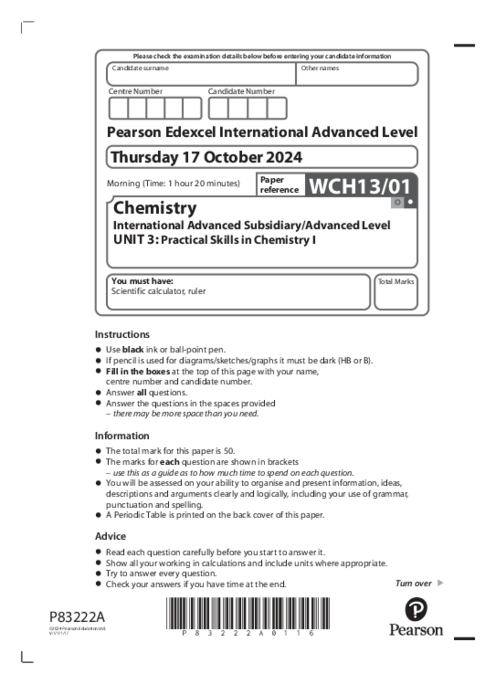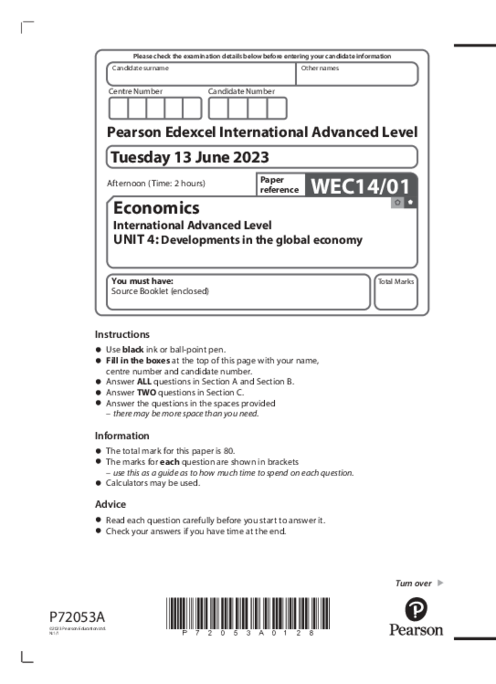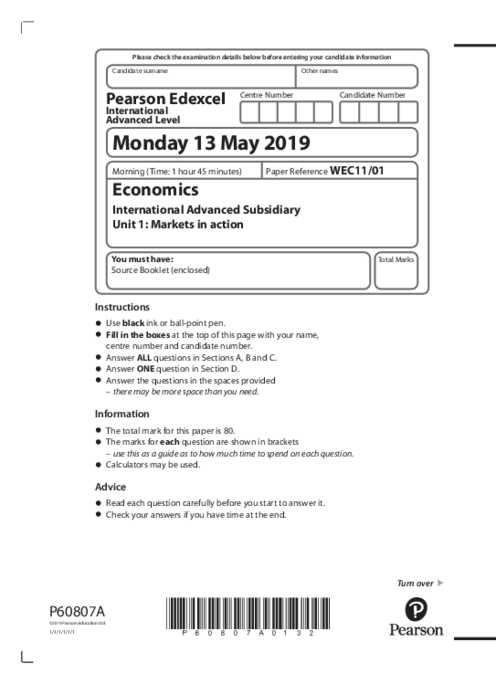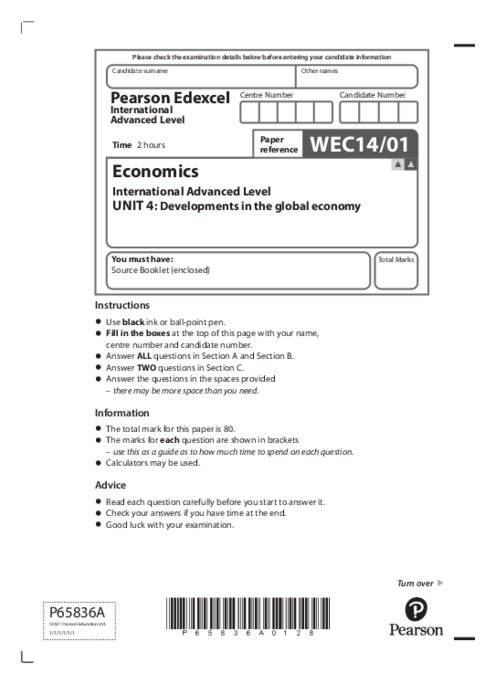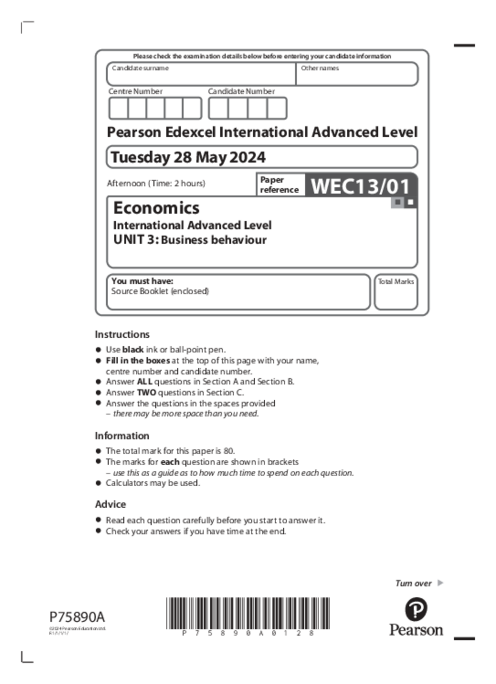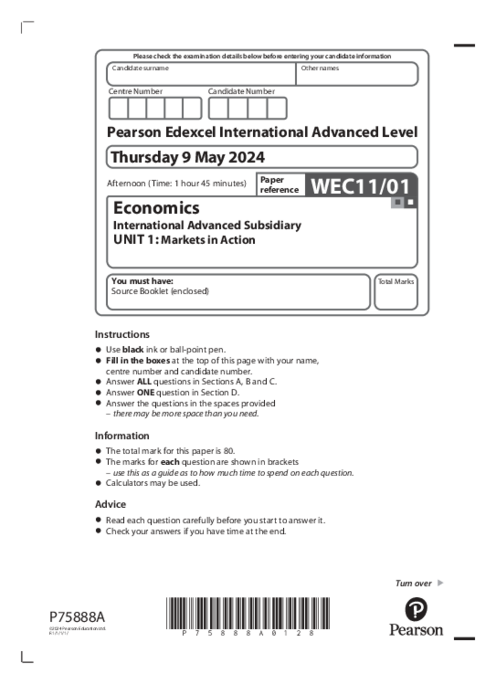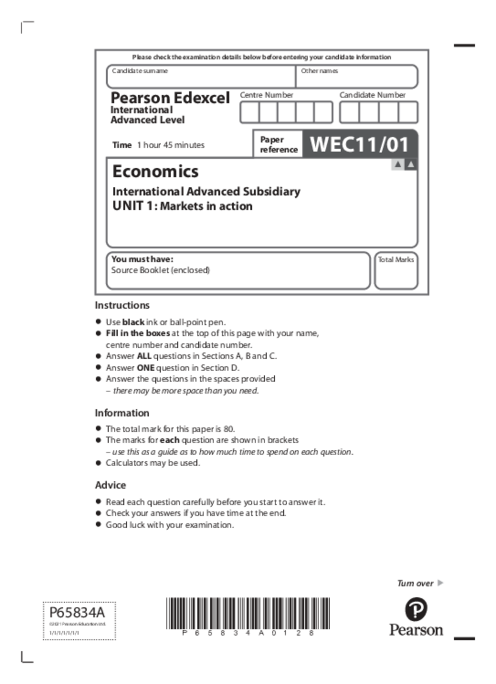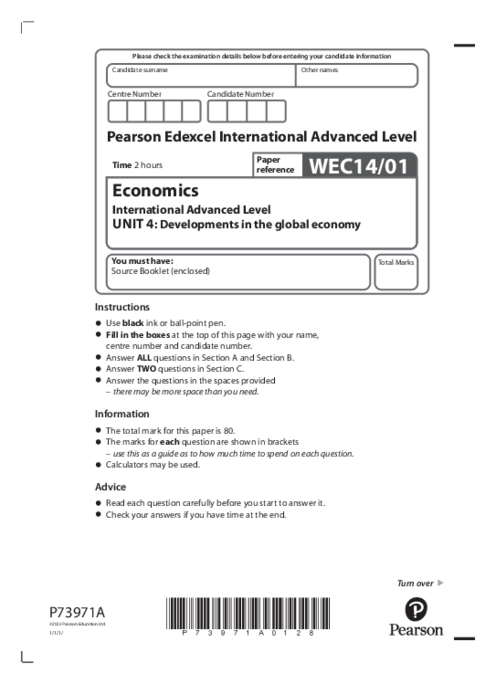Economics WEC12/01 June 2021
Edexcel
International AS/A Level
Economics (WEC)
Jun
2021
2. Economic indicators: inflation trends, exchange rate impact, unemployment and output gap analysis, consumption effects from house price changes, tax relief effects on business investment, foreign direct investment, current account balance, investment multipliers.
3. Policy analysis: fiscal policy via tax relief, monetary policy definition, interventionist supply-side policies, effects of GDP growth on population welfare, macroeconomic consequences of current account changes.
4. Quantitative data interpretation: inflation percentages over months, government expenditure as GDP percentage, investment growth rates, multiplier calculations, aggregate demand computation from consumption, investment, government spending, exports, and imports.
5. Graphical analysis: actual vs. trend GDP growth rates, aggregate demand shifts due to external shocks (e.g., oil price changes), diagrammatic representation of economic concepts.
6. Economic outcomes: consumption level impacts from housing market shifts, investment stimulus effects from tax relief, implications of GDP growth rates on East African economies, foreign direct investment meaning and role in economic growth.
معلم موافق رایگان بودن است.
1. Macroeconomic concepts: underemployment, inflation rates, government expenditure proportion of GDP, output gap, investment determinants, multiplier effect, aggregate demand components, real GDP growth.2. Economic indicators: inflation trends, exchange rate impact, unemployment and output gap analysis, consumption effects from house price changes, tax relief effects on business investment, foreign direct investment, current account balance, investment multipliers.
3. Policy analysis: fiscal policy via tax relief, monetary policy definition, interventionist supply-side policies, effects of GDP growth on population welfare, macroeconomic consequences of current account changes.
4. Quantitative data interpretation: inflation percentages over months, government expenditure as GDP percentage, investment growth rates, multiplier calculations, aggregate demand computation from consumption, investment, government spending, exports, and imports.
5. Graphical analysis: actual vs. trend GDP growth rates, aggregate demand shifts due to external shocks (e.g., oil price changes), diagrammatic representation of economic concepts.
6. Economic outcomes: consumption level impacts from housing market shifts, investment stimulus effects from tax relief, implications of GDP growth rates on East African economies, foreign direct investment meaning and role in economic growth.
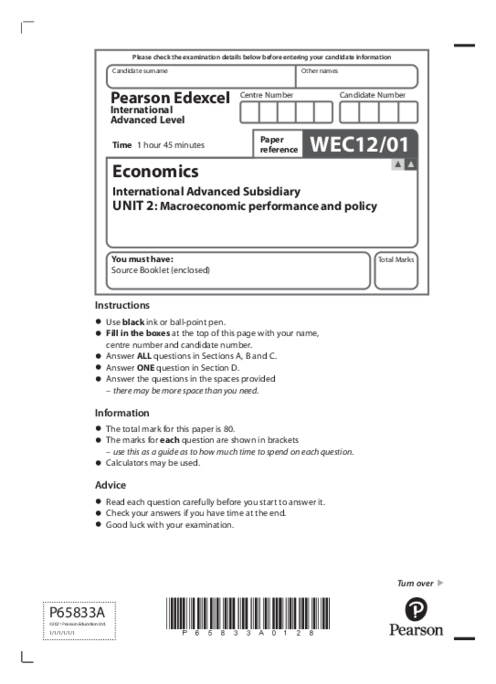
پیش نمایش صفحه اول فایل
تعداد صفحات فایل : 32
باز نشر محتواها در فضای مجازی، ممنوع است.


